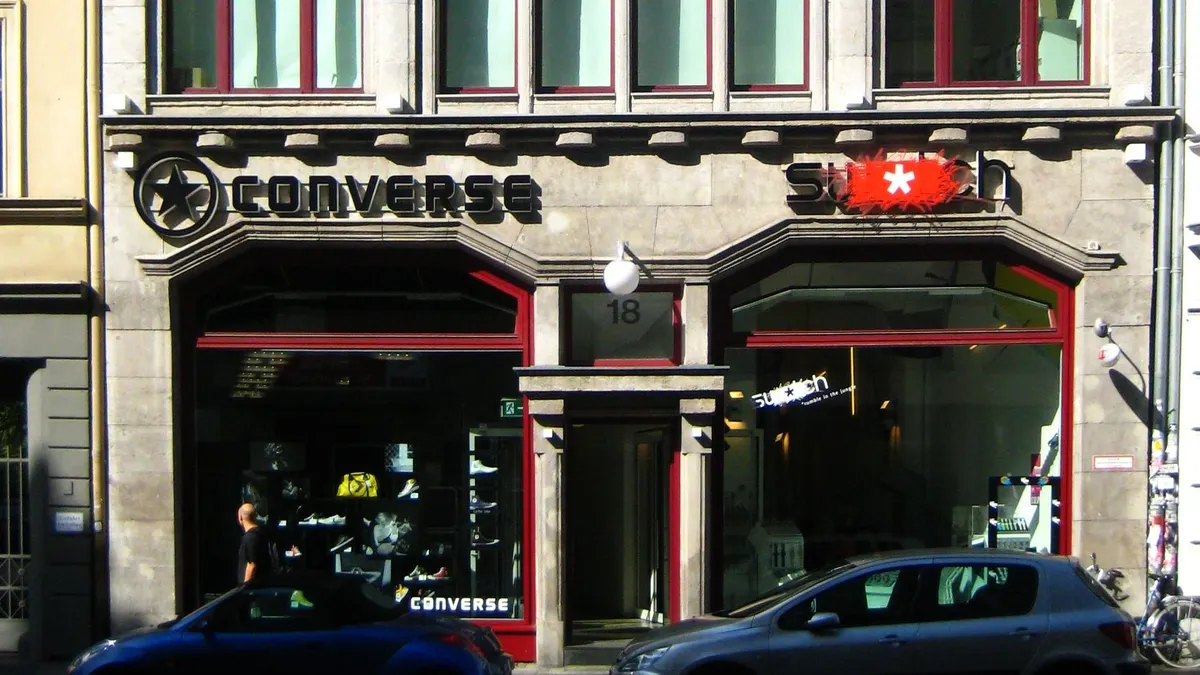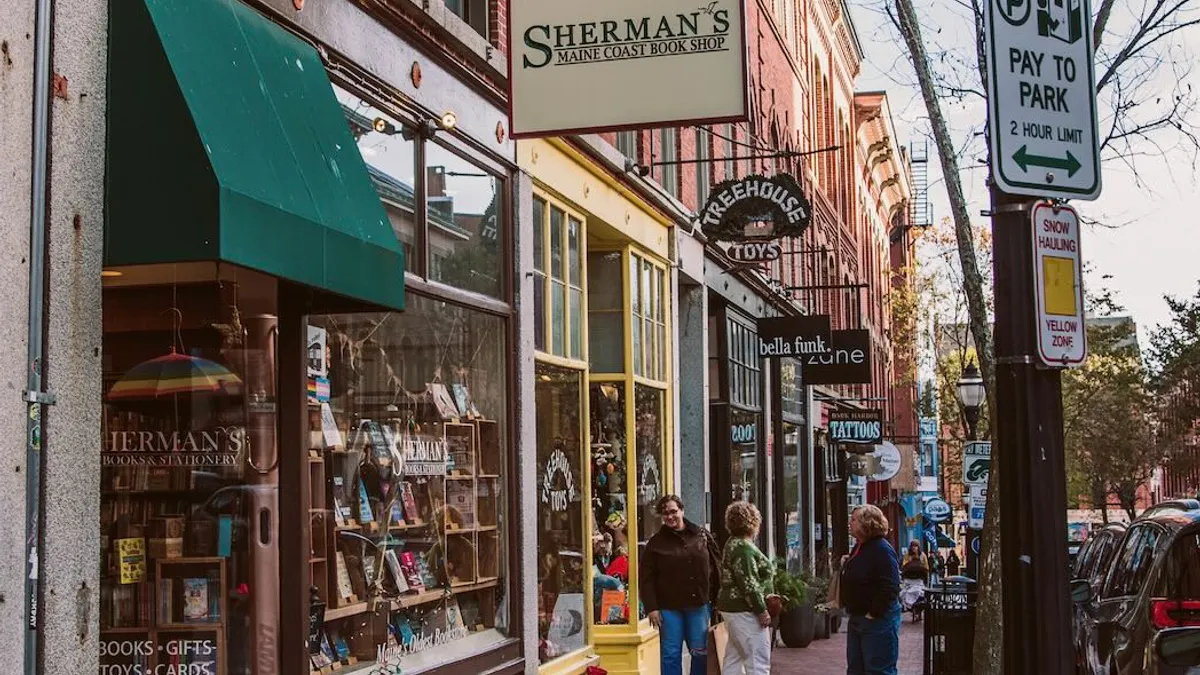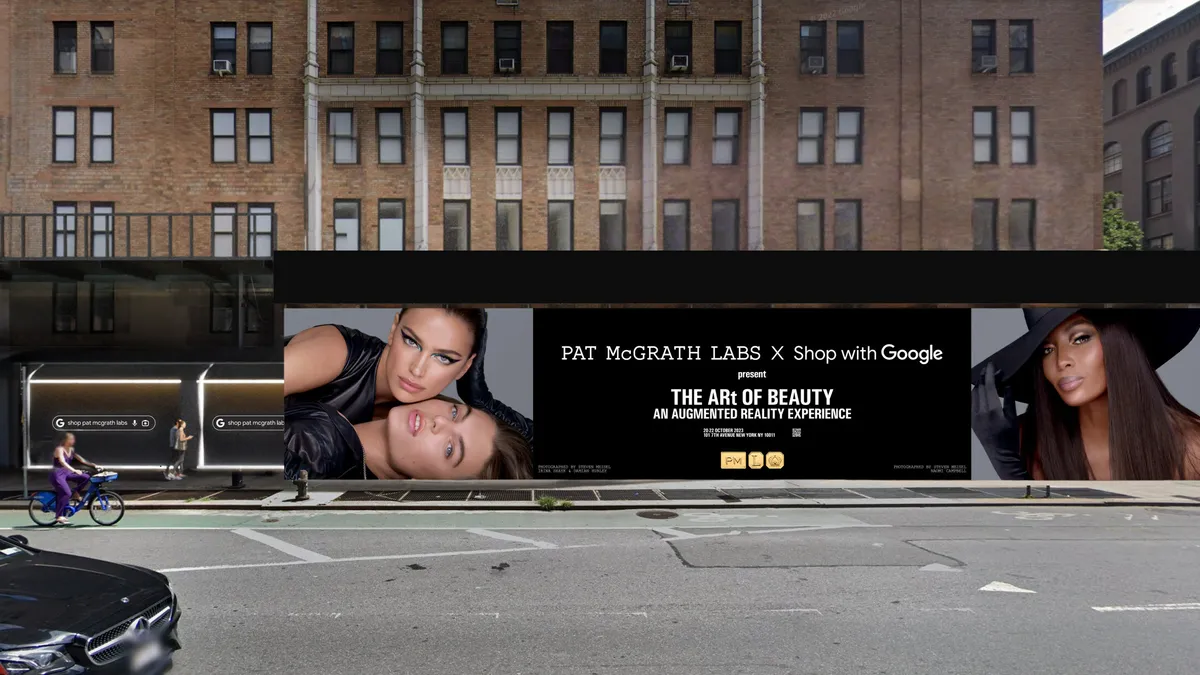It's safe to say that home improvement is having a moment.
Companies like The Home Depot and Lowe's are riding a wave thanks to a healthy housing market and the do-it-yourself trend. And traffic to these stores is booming.
Over the last year, Lowe's has gotten major props for rolling out a host of tech tools from its innovation lab, using AR, VR and other technologies to create mobile apps, in-store robots and seemingly futuristic employee tools (just take a look at the exosuit it's testing).
And yet, in its fourth quarter report late last month, Lowe's said sales fell 1.8% to $15.49 billion, down from $15.8 billion in the year-ago quarter. Analysts contend that the home improvement retailer is still in a good position (especially if you look elsewhere in the industry). And Lowe's head of digital development, Gihad Jawhar, this week told Retail Dive that these technologies aren't about conversions but convenience.
"They say the amount of change that has happened since 2000 outstrips the amount of change that's happened in the entire last century, and I think in the next eight or nine years we'll see the same amount of change," he said. "So it's about hanging on, placing your bets in the right places, and I think AR and VR is one of those places and keeping focused on the customer will keep you relevant."
But is there a way for Lowe's to address falling conversions with technology? On the topic, the discussion forum RetailWire asked its BrainTrust panel of retail experts the following questions:
-
Does Lowe's failure to drive higher conversions indicate that its high-profile investments in tech aren't all they're cracked up to be or are other factors at work?
-
What can Lowe's do to turn increased store traffic into increased sales?
Here are nine of the most provocative and insightful comments from the discussion. Comments have been edited by Retail Dive for length and clarity.
1. Fix the training, you fix conversion
Bob Phibbs, President/CEO, The Retail Doctor: Conversion takes relentless training on how to take a complete stranger who distrusts you to build enough rapport and become a trusted advisor so you can suggest and close the sale. You can't just have people — or robots — to answer questions, you need to help the shopper move from considering to buying. That takes a relentless focus on people, not gadgets or price, and not simply adding brands or technology. Fix the training, you fix conversion.
2. 'Real humans' are a necessity
Cynthia Holcomb, Founder CEO, Prefeye - Preference Science Technologies: As hardware stores like Lowe's and The Home Depot morph into destination "fashion/style" home product retailers, selling everything from lumber to light fixtures to the latest in appliances, real humans with category knowledge who care about the customer need to be on the floor. Technology for technology's sake is more about PR.
Lowe's website's look and feel is stylish, likely driving increased store traffic, raising customer expectations of a good in-store experience worth the drive time. Instead they find a self-serve model when they arrive.
3. Is there an app for that?
Tom Dougherty, President and CEO, Stealing Share: Conversion of lookers to buyers is not as simple as having an "app for that." Lowe's is having trouble converting because prospects are able to assess value in-situ. This translates into Lowe's becoming a great showroom for other retail venues. The investment in technology advancements is mandatory. It is the cost of doing business.
As a brand guy, I have a simple question to ask and, not surprisingly, it is about brand. Who does the customer believe they ARE when shopping at Lowe's? It is the answer to that fundamental brand question that inspires loyalty and margins.
4. Shiny object syndrome
David Katz, EVP & CMO, Randa Accessories: SOS: "Shiny Object Syndrome" — A LoweBot and HoloRoom prove that Lowe's can build tech. This doesn't mean they should build it … It's all about the three Ds of consumer experience: discovery, differentiation and delight.
Take a look at Target. CEO Brian Cornell stated, "just because we can build the store of the future, doesn't mean we should build it." Instead, the company focused on local, smaller, easier-to-shop stores with lots of value-built private branded product.
5. Stores shouldn't resemble amusement parks
Doug Garnett, President, Protonik: My sense is two things:
1. It sure looks like too much executive time has been spent, and far too much PR effort put into, a technology PR program. Most likely, to appeal to investors — and that effort has no impact on shoppers.
2. In the store, Lowe's has made significant compromises in personnel and merchandising — the two items that will increase or decrease conversion.
Interesting to see this, as well, in that I've worked many store programs around advertising innovative products. By advertising innovative products, store traffic increases AND conversion increases (whether they buy those innovations or not).
Why? A robust mix of staples and innovation deliver the experience that shoppers want (not any of these crazy ideas to make stores into c-grade amusement parks).
6. Invest in the store level
Steve Montgomery, President, b2b Solutions: Lowe's investment in tech would be better invested on its people at the store level. This includes increasing the number of people, providing them with better knowledge of the products carried and customer service training.
My recent shopping experiences with both Lowe's and Home Depot indicate Home Depot is getting back to its roots with a knowledgeable staff who are willing to take the time to help you find the items you were searching for. They are able to answer the questions customers pose. That was not true at Lowe's. Admittedly the research sample is small if based on a limited number of shopping trips in one market, so the validity is questionable.
7. Tech is nice, but not a conversion tool
Ken Lonyai, Consultant, Strategist, Tech Innovator, UX Evangelist: I'm all for high tech, but only if it's meeting real customer needs. Holoroom is nice, but an expensive rollout to the entire chain or even regionally. Is there enough need? Probably not. LoweBot might have usefulness to customers but it's not a conversion tool.
The sector is doing well right now, so it's not an industry thing. If I were calling the shots, I'd really be getting to know customers and doing a competitive analysis, to get the right focus.
8. Who's there to help?
Camille P. Schuster, PhD, President, Global Collaborations: Having lots of choices is great. Having technology to demonstrate features is great. Having technology provide information is great. But who is there to help the consumer sift through the information and choices to determine what choice is good for them? Technology and product selection by themselves do not translate into sales.


















